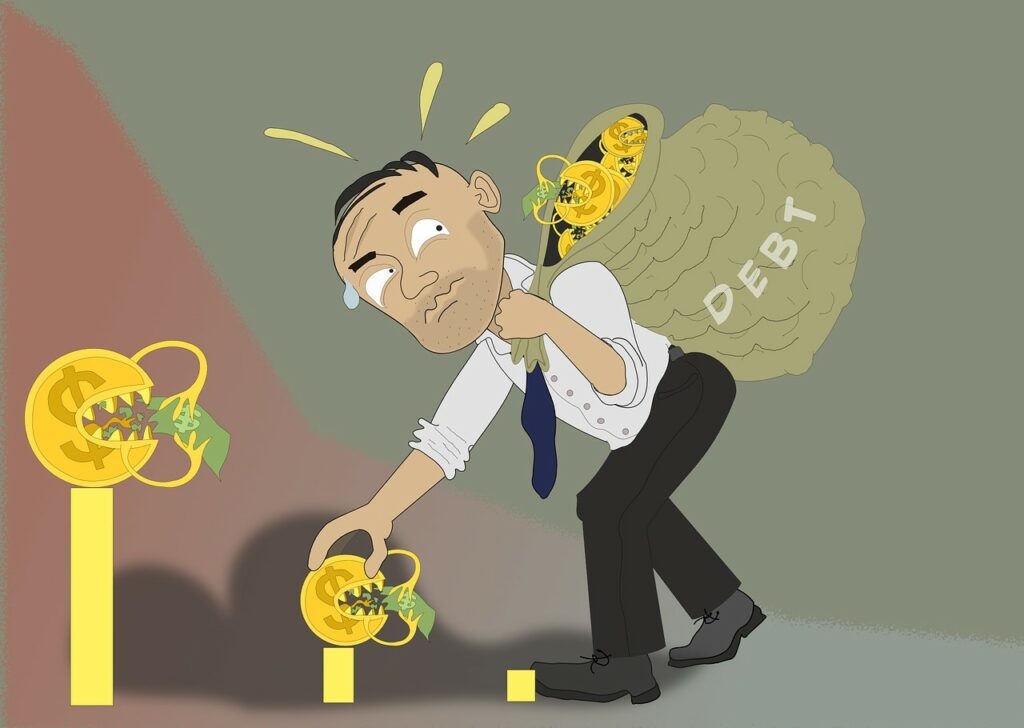The burden of debt can be a significant source of stress and financial strain for many individuals and families. Among the types of debt are credit card debts, student loans, or medical bills. Being in debt could get overwhelming and hinder you from attaining financial independence. However, if certain strategies are employed and the right mindset is adopted, it can be possible to effectively manage and ultimately eliminate this kind of burden. In this guide, we look at proven strategies that will help you become debt-free faster, empower you to take control of your finances and aim for a future without debt. For those swimming in red ink or those eager to avoid it altogether, these tips will assist in navigating toward material stability.
Study your debt status
The first step towards paying off the debts quickly involves assessing one’s current status on debt. Exactly what are your outstanding balances? What about the interest rates? What do they demand monthly? Make a list of all your debts under subheadings such as credit card debts, student loans, personal loans, etc., then prioritize them depending on interest rates, among other things like outstanding balances. This way, you will understand how much money must go to each creditor so that you can formulate an effective plan for settling your liabilities that focuses on each particular case.
After understanding what constitutes your liabilities, calculate the proportion between the total liability sum expressed through monthly payments and gross revenues within a month, thus gauging your overall financial health. It is also at this point that one needs to find out how much income goes into repaying the obligations by computing his total income ratio (TIR). Ideally, 36 percent or less should be recommended as an ideal target for anyone trying to settle their liabilities, but this figure may not suit every situation due to factors like individual circumstances or financial goals varying.
Make budgets and slash costs.
In order to monitor your income and expenses while determining where some funds could be redirected toward repayment of previous credits, creating budgets becomes crucial. Start by writing down all the sources of income you have, including salaries, bonuses, and any other income streams you might have. Then write down all your recurring expenses, like rent or mortgage, utilities, groceries, transportation, and entertainment. What distinguishes essential costs (such as housing, utilities, and food) from those that could be avoided (like eating out, going shopping, or traveling)?
Once these basic facts are clear to you, you can look for ways through which non-essential spending may be lessened or eliminated entirely. For example, meal planning, shopping sales, cutting extra subscriptions or memberships, etc., frugal habits can help reduce unnecessary expenditures. Budgeting tools and apps will help track expenditure while ensuring financial goals are met. When a budget is created to cut costs, more money can go towards paying off debts, thereby accelerating one’s journey towards becoming debt-free.
Explore debt repayment strategies
Now that you have a budget in place and have cut back on your expenses, it is time to look at different ways of repaying your outstanding balances effectively. One such way is called the debt snowball method: pay off small obligations first while keeping current with big ones. With each debt settled, the following payment on this list becomes larger, i.e., gaining momentum, thus speeding up the whole thing.
Another strategy is what is called the method of debt avalanche, where one concentrates on debts with high interest rates while making minimum payments on those that have lower interest rates. This way, you can cut down on the amount of interest paid and potentially pay off your debts faster. Take a look at your options for paying off debt and choose the one that suits your financial goals best.
Think about debt consolidation or refinancing
Debt consolidation or refinancing are two ways to simplify debt repayment and save on interest expenses. In the case of debt consolidation, multiple obligations are combined into one loan that carries lower interest charges and is easier to handle, thereby reducing the total cost of interest paid by users. Common examples of debt consolidation vehicles include credit cards for transfers of balance, home equity loans or lines of credit, and personal loans.
In a similar manner, refinancing is replacing an existing loan with another loan offering better terms, such as a reduced interest rate or a longer time to repay it. As such, monthly payments might reduce, and overall interest costs may also decrease; hence, it will be easier for someone to fully settle their debts. Therefore, carry out an intensive search through various forms of refinancing and consolidate all this information so as to obtain the most suitable alternative based on fees, terms, and interest rates.
Conclusion and Recap
To summarize everything mentioned above, effective management of indebtedness plays a key role in enhancing financial stability and independence. When you follow the steps highlighted in this guide, you can start taking charge of your finances, leading you toward a life without any liabilities. To recap, here are some major points covered:
Assess Your Debt Situation: Begin by examining your current levels of borrowing, including outstanding balances, APRs, and total DTI ratios.
Create a Budget and Cut Expenses: Draft a budget that shows income against expenditures, then identify areas where unnecessary spending could be minimized, thus injecting more resources into repaying debts.
Explore Debt Repayment Strategies: Think through such debt repayment strategies as a snowball and an avalanche, which would help you organize the payment of your debts in the most effective way.
Consider Debt Consolidation or Refinancing: You may want to consider debt consolidation or refinancing your loan in order to simplify your debt repayments and reduce interest rates.
Stay Committed and Persistent: Stick to your budget, control what you spend, and have some small achievements in life as you get out of debt.
To get rid of all the financial issues, one just needs to follow these policies that will help them overcome their debts. Also, remember that each step made towards becoming free from loans brings us closer to what we want for ourselves financially in the long term. Stay motivated, stay disciplined, and stay proactive in managing your finances. By staying committed and focusing on her long-term goals, however, she can also be free from financial problems.




